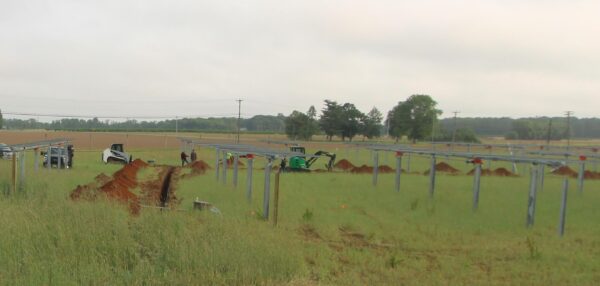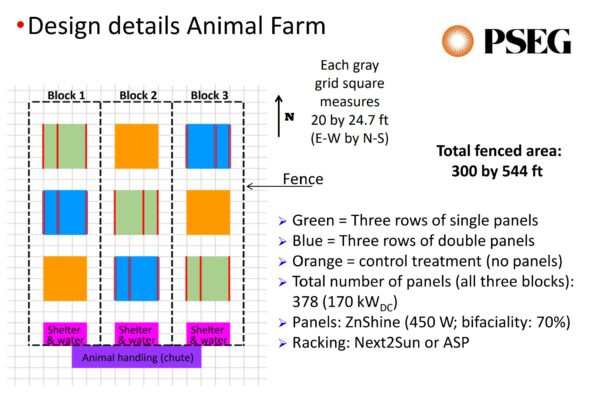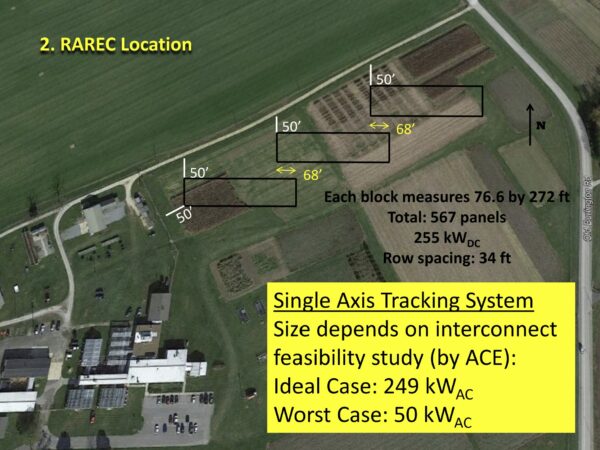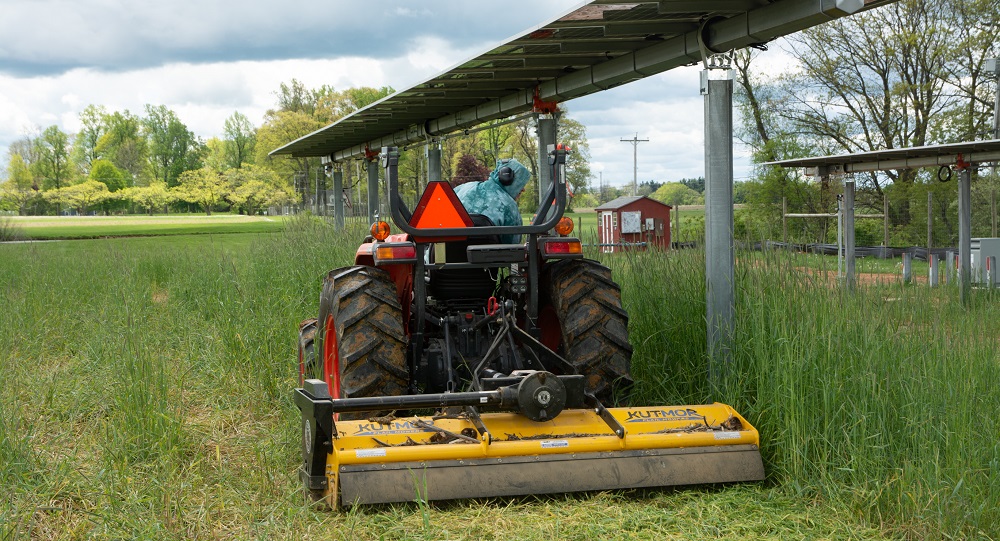New Jersey’s Board of Public Utilities (NJBPU) has authorized the Dual-Use Solar Energy Pilot Program. This 200 MWdc agrivoltaic pilot program will run over a span of three years and will be jointly executed by the New Jersey Department of Agriculture and Rutgers University’s Agrivoltaics Program (RAP).
While the governor granted approval to the program in 2021, it is still in the early stages of development. A detailed straw proposal is slated for release in summer 2023, marking the beginning of a “robust public engagement process.”

RAP disclosed details about its R&D agrivoltaic systems under development at three New Jersey Agricultural Experiment Station Farms this spring. These facilities include the Rutgers Animal Farm in New Brunswick, the Rutgers Agricultural Research and Extension Center (RAREC) facility in Bridgeton, and the Snyder Research and Extension Farm in Pittstown.
The Animal Farm facility will feature 170 kWdc vertical bifacial solar panels. The construction plans include ZnShine 450 solar modules featuring a backside bifaciality rating of 70%. The facility has not yet started construction, but is expected to be completed by July of this summer.

At the southern end of the solar plant will be animal shelter and water facilities, as well as handling infrastructure. The researchers will be testing the performance of forage crops for beef cows and also tracking their movement in and around the rows of vertical bifacial panels.
The RAREC facility, the size of which could vary between 40 kWac and 211 kWac depending on interconnection availability, is undergoing a full 255 kWdc system installation. Crop experiments will be conducted regardless of whether the panels are fully connected.

David R. Specca, head of Rutgers Agrivoltaics Program Lead, told pv magazine USA:
We will be researching the impact of single-wide and double-wide single axis trackers along with the necessary control blocks to provide the statistical analysis need for our trials at RAREC. The crops we are planning to grow at RAREC for the first three years will be spinach, broccoli, and lettuce in the spring season; tomatoes, peppers and eggplant in the summer/fall season; and cover crops during the winter season. We will also use a portion of the trial area for soybeans.
The Snyder Farm, a single axis tracker facility, has 94.5 kWdc of modules but is restricted to 82.4 kWdc due to restrictions on the size of the existing transformer. The state board’s ruling limits the solar facility to delivering 104,424 kWh per year to three off-take customers. The Snyder solar facility will be used for hay production for its first three years.
In the Dual-Use Solar Energy Pilot Program, each project is capped at 10 MWdc. The pilot program is expected to last three years, offering a total capacity of 200 MW, with an option for a five-year extension and a total capacity of 300 MW. The NJBPU hopes to choose projects following a competitive process that includes both “price and non-price terms”, as well as a wide range of crops on unpreserved farmland.
This content is protected by copyright and may not be reused. If you want to cooperate with us and would like to reuse some of our content, please contact: editors@pv-magazine.com.








By submitting this form you agree to pv magazine using your data for the purposes of publishing your comment.
Your personal data will only be disclosed or otherwise transmitted to third parties for the purposes of spam filtering or if this is necessary for technical maintenance of the website. Any other transfer to third parties will not take place unless this is justified on the basis of applicable data protection regulations or if pv magazine is legally obliged to do so.
You may revoke this consent at any time with effect for the future, in which case your personal data will be deleted immediately. Otherwise, your data will be deleted if pv magazine has processed your request or the purpose of data storage is fulfilled.
Further information on data privacy can be found in our Data Protection Policy.